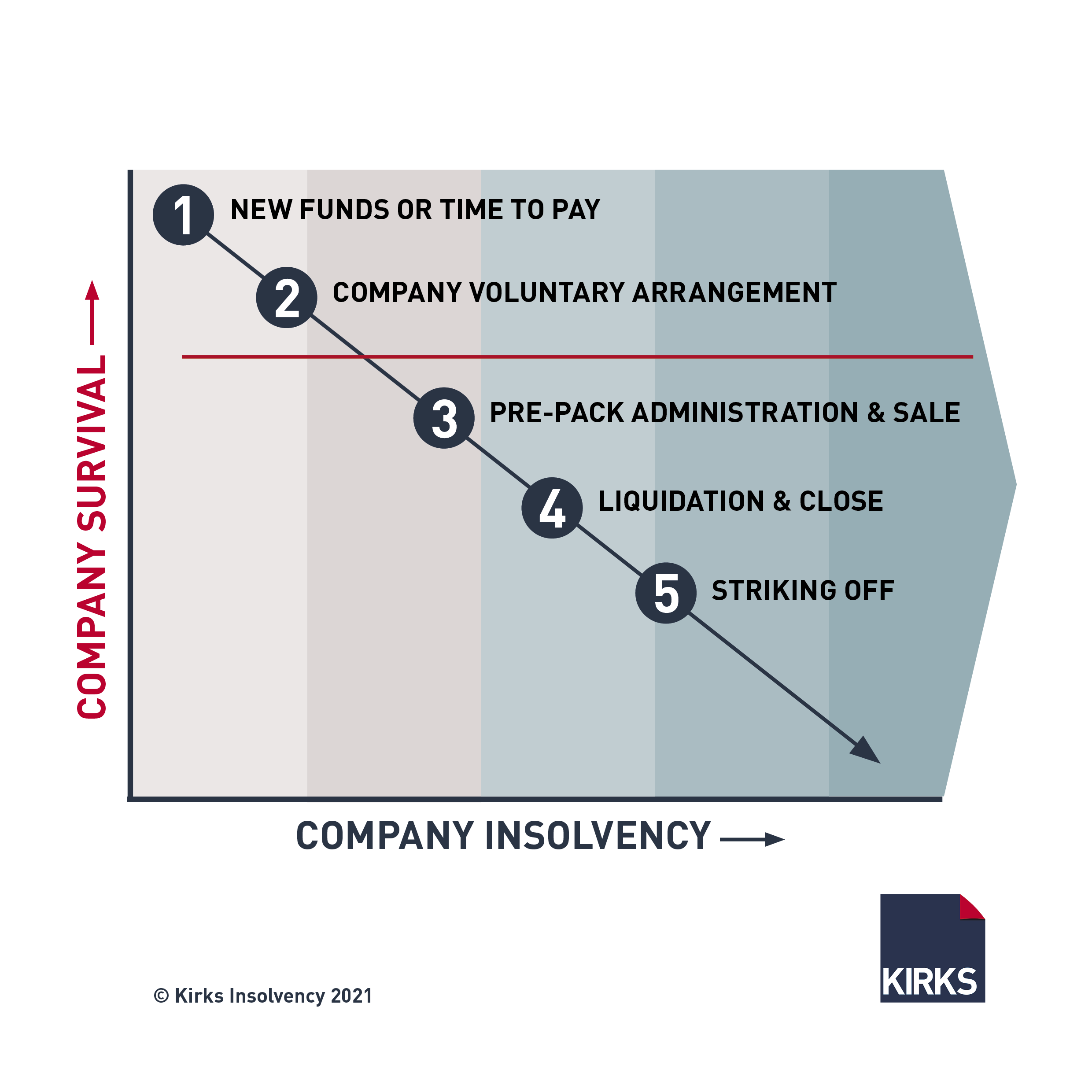Insolvency Practitioner Can Be Fun For Anyone
Insolvency Practitioner Can Be Fun For Anyone
Blog Article
Insolvency Practitioner for Dummies
Table of ContentsMore About Insolvency PractitionerGetting My Insolvency Practitioner To WorkGetting My Insolvency Practitioner To WorkThe Main Principles Of Insolvency Practitioner Insolvency Practitioner Fundamentals ExplainedThe Best Guide To Insolvency PractitionerSee This Report on Insolvency Practitioner
Insurance coverage is monitored and regulated by state insurance departments, and among their primary objectives is shielding insurance holders from the risk of a company in economic distress. When a business goes into a duration of financial trouble and is unable to meet its responsibilities, the insurance commissioner in the firm's home state starts a processdictated by the regulations of the statewhereby initiatives are made to help the company reclaim its financial ground.If it is figured out that the company can not be restored, the firm is proclaimed bankrupt, and the commissioner will ask the state court to get the liquidation of the business. [Back] The insurance policy commissioner, either assigned by the governor or elected, heads the state insurance division and displays and regulates insurance activity within the state.
By obtaining control of a firm, the commissioner (or the insurance coverage department) is, by legislation, the rehabilitator or liquidator of the firm. In this capability, the commissioner or division takes control of the firm's operations. Rather than do so straight, the commissioner might keep a special deputy receiver to monitor the firm's activities.
Insolvency Practitioner Things To Know Before You Buy
The receiver supervises an accountancy of the company's properties and liabilities and carries out the estate of the firm. In doing so, the receiver seeks to maximize the company's possessions, move them to cash money, and then distribute that money to creditors having legitimate cases against the insurance provider according to repayment priorities specified by state legislation (in all states, insurance holders are top priority claimants whose claims are paid before those of general creditors).
All insurance provider (with minimal exceptions) licensed to offer life or wellness insurance or annuities in a state must be participants of that state's guaranty association. The warranty organization coordinates with the commissioner and the receiver in pre-liquidation planning. As soon as the liquidation is bought, the warranty organization provides protection to the company's policyholders that are state citizens (up to the degrees specified by state lawssee listed below; any benefit amounts over the guaranty asociation advantage levels end up being claims versus the business's continuing to be possessions).
How Insolvency Practitioner can Save You Time, Stress, and Money.
The above insurance coverage levels use independently for each financially troubled insurance provider. [Back] When an insurer falls short and there is a deficiency of funds required to fulfill the obligations to insurance policy holders, state guaranty organizations are activated. Guaranty organizations have two primary resources of funding when giving protection to insurance holders. Guaranty organizations have subrogation civil liberties to a proportional share of the assets staying in the failed insurance company.
Second, insurance companies doing company in that state are analyzed a share of the quantity called for to meet the section of the warranty organizations' protected claims not otherwise funded with estate properties. The amount insurance firms are assessed is based upon the amount of costs that they collect in that advice state. [Back] The National Company of Life and Wellness Insurance Warranty Associations (NOLHGA) is composed of the life and health insurance coverage guaranty organizations of all 50 states and the Area of Columbia.
NOLHGA establishes a job pressure of representative guaranty associations to collaborate with the insurance coverage commissioner to establish a strategy to safeguard policyholders. For additional information on NOLHGA's role at the same time, see "What Is NOLHGA?" and "The Safety Net at the workplace." [Back]
The 7-Second Trick For Insolvency Practitioner

Predictive security by assisting you select the best customers and the ideal markets to prevent uncollectable loan to begin with, many thanks to acute monetary analysis. Comprehensive market intelligence, offering you with 360-degree presence on company industries and putting in jeopardy problems. It would be a simplification to think a trade credit rating insurance policy starts and finishes with costs and pay-outs.

Getting The Insolvency Practitioner To Work
Why does a company get in into bankruptcy? There are a number of factors why a firm may get in right into insolvency.
Various other reasons for bankruptcy consist of scams, mismanagement, and unforeseen expenses. When a business ends up being bankrupt, its possessions are made use of to repay its financial debts. This can have a major influence on the company, as it might no more have the ability to continue running. Bankruptcy can also cause task losses and the closure of organizations.
Top Guidelines Of Insolvency Practitioner
This can have significant effects for the firm, its stakeholders, financial institutions and the economic climate. The firm might be required to sell properties, gave up staff or even shut down. This can have a knock-on result on the local neighborhood and the economy as a whole. Financial institutions may be left out of pocket and the business's investors may see their investment vanish.
This can occur for a variety of factors, consisting of bad monetary management, unexpected expenses, or a change in the marketplace. If a business is financially troubled, it may be required to shut down or sell assets to pay financial institutions. This can have a major influence check this on the company, employees, and investors.
Why does a business enter into insolvency? There are a number of reasons why a company might get in right into bankruptcy.
Insolvency Practitioner - Questions
Various other factors for bankruptcy consist of fraudulence, mismanagement, and unexpected expenses. When a company comes to be bankrupt, its assets are made use of to pay off its financial obligations - Insolvency Practitioner. This can have a significant effect on business, as it might no longer have the ability to proceed operating. Insolvency can additionally cause work losses and the closure of companies.
This can have significant implications for the firm, its stakeholders, creditors and the economy. The company may be compelled to sell assets, lay off personnel and even fold. This can have a ripple effect on the neighborhood area and the economic situation in its entirety. Creditors may be left out of pocket and the business's shareholders may see their financial investment vanish.
Report this page